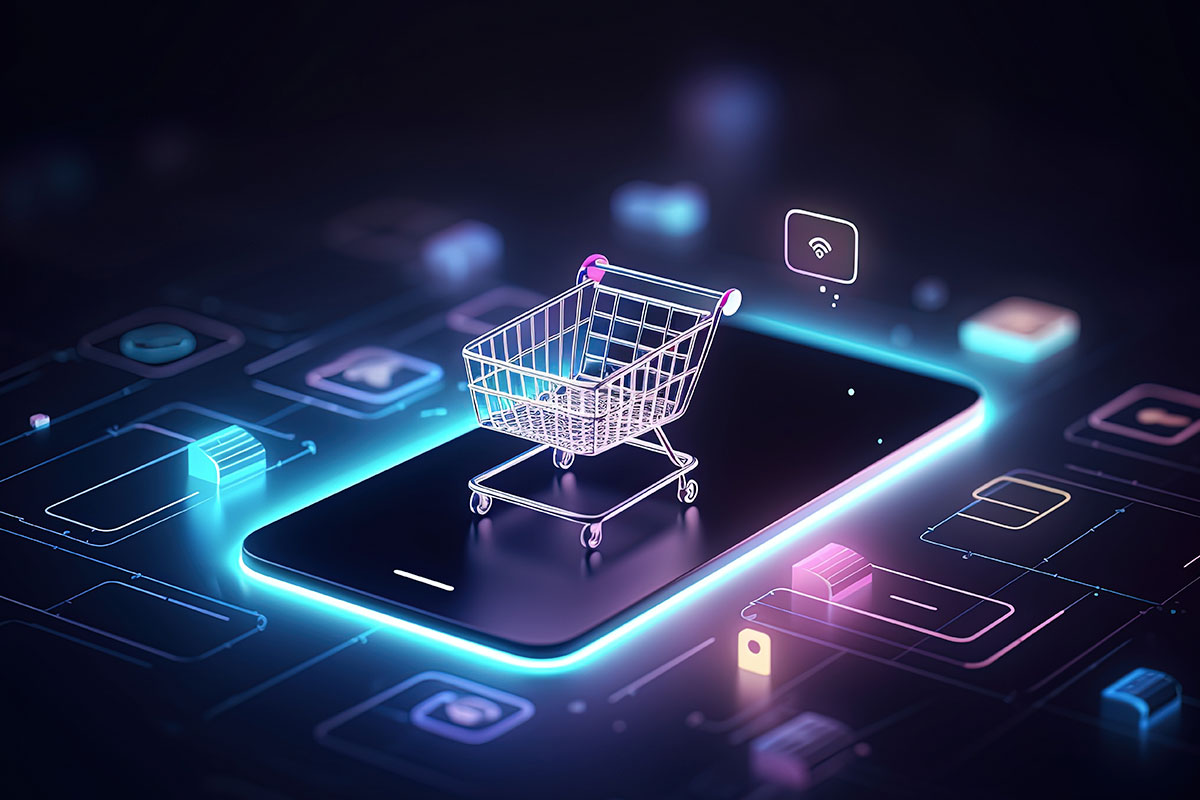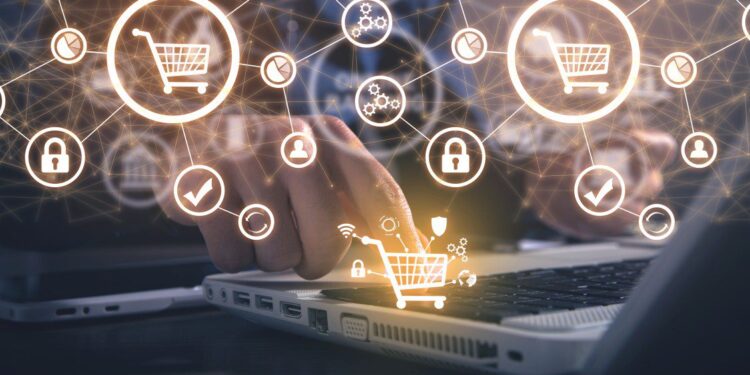The landscape of retail has been in a state of continuous evolution. From the bustling market square to the grand department store, and then to the simple click-and-buy websites of the early internet, commerce has always adapted to human behavior. Today, we are on the cusp of a new and profound transformation. The future of online commerce is no longer a world of passive shopping carts and static product pages; it is a dynamic, intelligent, and deeply integrated ecosystem that blends the best of digital technology with a new focus on human experience.
This isn’t just about selling products online; it’s a complete reimagining of the customer journey, from the moment of discovery to the final delivery. It’s a movement driven by a demand for greater personalization, authenticity, and a shopping experience that is not just convenient but also engaging and meaningful. This comprehensive guide is a deep dive into this transformative era, exploring the core pillars that define tomorrow’s digital retail, the groundbreaking technologies that are making it a reality, and the critical challenges we must navigate to ensure this future is one that is equitable, humane, and sustainable.
A Foundation of Digital Retail

To understand where online commerce is going, we must first appreciate how far we’ve come. The history of online retail is a story of gradual evolution, with each stage laying the groundwork for the next.
- From Catalogs to Clicks: The First Wave of E-commerce: The early days of e-commerce were a simple digital translation of a paper catalog. A website was a static page with a list of products, and the customer journey was a linear process of search, click, and purchase. It was a transactional model, with little to no focus on personalization or engagement. This was the era of the “online store,” a place you went to buy a specific item and then left.
- The Rise of the Giant: A Centralized Model: The second wave of e-commerce was defined by the rise of a few, massive online retailers that consolidated the market. These giants, with their vast product selection and their focus on logistics and delivery, fundamentally changed the way we shop. This was an era of convenience, with a focus on speed and a one-size-fits-all approach to the customer experience.
- The New Consumer: A Demand for More: Today, a new generation of consumers is demanding more from online retailers. They are looking for a personalized shopping experience that is a direct reflection of their unique needs and desires. They are looking for brands that are authentic, ethical, and committed to sustainability. They are looking for a shopping experience that is not just convenient but also engaging, social, and meaningful.
The Four Pillars of the Future of Online Commerce
Tomorrow’s online commerce is not a monolith; it is a tapestry of new and innovative approaches that are being woven together to create a more dynamic and flexible professional landscape.
A. Hyper-Personalization: A Shopping Experience Designed for One
The future of digital retail is deeply personal. The one-size-fits-all model of the past is being replaced by a hyper-personalized shopping experience that is a direct reflection of a customer’s unique needs, preferences, and desires.
- AI-Powered Product Discovery: A customer’s journey will begin with a personalized feed of products that are tailored to their specific interests and needs. An AI algorithm will analyze a customer’s browsing history, their purchase history, and even their emotional state to provide a truly unique and tailored shopping experience.
- Personalized Marketing: The marketing of the future will be a personalized one, with a focus on delivering the right message to the right person at the right time. An AI algorithm will analyze a customer’s data and provide them with a personalized offer or a message that is tailored to their specific needs.
- Personalized Customer Service: The customer service of the future will be a personalized one, with an AI-powered chatbot that can answer a customer’s questions, resolve their issues, and provide them with a more seamless and intuitive experience.
B. Immersive and Experiential Shopping: Beyond the 2D Screen
The shopping experience of the past was a 2D experience on a screen. The future is a 3D, immersive, and experiential one.
- Augmented Reality (AR) for “Try Before You Buy”: AR technology will allow a customer to see a product in their home before they buy it. They will be able to see how a new piece of furniture will look in their living room or how a new piece of clothing will fit. This will provide a new level of confidence and a new way of interacting with a product.
- Virtual Reality (VR) and the Metaverse for Immersive Stores: The metaverse is not just a gaming platform; it is a new social and retail frontier. A new generation of virtual stores is being created that allows customers to walk through a virtual store, see a product in 3D, and interact with a virtual salesperson. This is a new way to shop, with a focus on personalization, convenience, and a more immersive experience.
- The Blending of Physical and Digital: The future of retail is a seamless blend of the physical and the digital, known as omnichannel retail. A customer might begin their journey online and then finish it in a physical store, or they might browse a product in a physical store and then purchase it online. The goal is to provide a seamless customer journey that is a direct reflection of a customer’s unique needs and desires.
C. Social and Community-Driven Commerce: The New Word-of-Mouth
The future of online commerce is social. The old model of a company talking to a customer is being replaced by a model of a community of customers talking to one another.
- The Power of Live Shopping: Live shopping is a new trend that is a powerful blend of e-commerce and entertainment. A host, often an influencer, showcases a product in a live video, with a focus on engaging with the audience and providing them with an interactive and fun shopping experience.
- Influencer Marketing and User-Generated Content: The future of marketing is authentic. The old model of a company creating its own marketing content is being replaced by a model of influencer marketing and user-generated content. A brand’s customers, with their authentic voices and their unique perspectives, are becoming the new brand ambassadors.
- Community-Driven Commerce: The future of e-commerce is community-driven. A new generation of online marketplaces is being created that is built on the principles of community and trust, with a focus on providing a platform for small businesses and independent artists to connect with their customers in a more meaningful way.
D. Sustainability and Ethical Sourcing: A Non-Negotiable for Consumers
Today’s consumers are demanding more from brands. They are looking for brands that are authentic, ethical, and committed to sustainability.
- The Circular Economy: The future of e-commerce is a circular one, with a focus on reusing, recycling, and upcycling products. A new generation of online marketplaces is being created that is built on the principles of a circular economy, with a focus on providing a platform for customers to buy and sell used products.
- Supply Chain Transparency: The future of retail is transparent. Consumers are demanding to know where their products come from, how they are made, and what their carbon footprint is. A new generation of e-commerce platforms is being created that is built on the principles of supply chain transparency, with a focus on providing a complete and accurate picture of a product’s journey from a factory to a customer’s home.
- Ethical Sourcing: The future of retail is ethical. Consumers are demanding to know that their products are made in a way that is fair to both the people who make them and the planet they live on. A new generation of online marketplaces is being created that is built on the principles of ethical sourcing, with a focus on providing a platform for brands that are committed to a more just and sustainable world.
The Technological Toolkit for Tomorrow’s E-Commerce

The vision of a next-gen online commerce is made possible by a suite of interconnected technologies that are fundamentally changing the way we shop and sell.
- Artificial Intelligence and Machine Learning: This is the engine of tomorrow’s e-commerce. AI is being used to personalize the customer experience, to automate customer service, and to optimize the supply chain.
- AI-Powered Customer Service: The customer service of the future will be a personalized one, with an AI-powered chatbot that can answer a customer’s questions, resolve their issues, and provide them with a more seamless and intuitive experience.
- Supply Chain Optimization: AI algorithms can analyze a vast amount of data, from weather patterns to traffic flow, to optimize the supply chain, ensuring that a product is delivered to a customer’s home in a way that is both fast and sustainable.
- Augmented and Virtual Reality: The future of retail is a 3D, immersive experience.
- AR for “Try Before You Buy”: This technology allows a customer to see a product in their home before they buy it, providing a new level of confidence and a new way of interacting with a product.
- VR and the Metaverse for Immersive Stores: The metaverse is not just a gaming platform; it is a new social and retail frontier. A new generation of virtual stores is being created that allows customers to walk through a virtual store, see a product in 3D, and interact with a virtual salesperson.
- Social Commerce Platforms: The future of e-commerce is social.
- The Power of Live Shopping: Live shopping is a new trend that is a powerful blend of e-commerce and entertainment. A host, often an influencer, showcases a product in a live video, with a focus on engaging with the audience and providing them with an interactive and fun shopping experience.
- Influencer Marketing and User-Generated Content: The future of marketing is authentic. The old model of a company creating its own marketing content is being replaced by a model of influencer marketing and user-generated content. A brand’s customers, with their authentic voices and their unique perspectives, are becoming the new brand ambassadors.
- Blockchain and Decentralized Commerce: The future of e-commerce is decentralized.
- Secure Payments and Smart Contracts: The blockchain will be used to create a more secure and transparent way to manage our payments and our contracts.
- The Rise of Decentralized Marketplaces: The future of e-commerce is a decentralized one, with a focus on providing a platform for small businesses and independent artists to connect with their customers in a more meaningful way. This is a movement that is a direct challenge to the centralized, monopolistic model of the past.
- Omnichannel and Headless Commerce: The future of retail is a seamless blend of the physical and the digital.
- Omnichannel Retail: This is a strategy that provides a seamless customer journey across all channels, from a physical store to a website to a social media platform.
- Headless Commerce: This is a technology that separates a website’s front end from its back end, providing a new level of flexibility and a new way to create a more personalized and more seamless customer experience.
Case Studies in the Revolution
The concepts of online commerce are being brought to life in projects around the world. These are not just theoretical models but tangible examples of what is possible.
- A company using AI for personalized product discovery: A new online fashion retailer uses an AI algorithm to analyze a customer’s browsing history, their purchase history, and even their emotional state to provide a truly unique and tailored shopping experience. The customer’s feed is not just a list of products; it is a personalized magazine that is a direct reflection of their unique style and their unique needs.
- A brand with an immersive VR retail store: A luxury brand is creating an immersive VR retail store that allows customers to walk through a virtual store, see a product in 3D, and interact with a virtual salesperson. The store is a work of art, a beautiful and immersive experience that is a direct reflection of the brand’s core values.
- A successful live-shopping brand: A new direct-to-consumer brand is using live shopping to connect with its customers in a more meaningful way. The brand’s CEO hosts a live video every week, showcasing new products and engaging with the audience in a fun, interactive, and transparent way.
- A company using blockchain for supply chain transparency: A new ethical fashion brand is using blockchain to provide its customers with a complete and accurate picture of a product’s journey from a factory to a customer’s home. The customer can scan a QR code on a product’s tag and see a complete and transparent history of the product, from the farm where the cotton was grown to the factory where the shirt was made.
The Challenges and Ethical Imperatives
While the future of online commerce is exciting, it is not without its challenges. Navigating these hurdles is key to building a future that is equitable, humane, and sustainable.
- Data Privacy and Security: The future of online commerce is a data-driven one, and the need for robust data privacy and security will be paramount. The challenge is to create a shopping experience that is both intelligent and respectful of our privacy, a technology that works for us, not against us.
- The “Filter Bubble” and Algorithmic Bias: As AI becomes more central to the customer journey, there is a risk that we will be trapped in a “filter bubble,” a world where we are only shown products that are similar to what we have already purchased. The challenge is to use AI to both personalize our experience and to expose us to new and innovative products.
- The Environmental Footprint of E-commerce: The rise of e-commerce has a significant environmental footprint, from the energy consumed by data centers to the emissions from a fleet of delivery trucks. The challenge is to create a more sustainable and more ethical online commerce, with a focus on a circular economy and a new generation of sustainable packaging and delivery systems.
Conclusion
The discipline of online commerce is at a pivotal moment. The old models of design, based on endless growth and resource consumption, are no longer viable. The future of our built environment and our society depends on a new kind of creative thinking—one that is restorative, responsible, and regenerative. The future of online commerce is the blueprint for this new era. It is a powerful fusion of technology and humanity, a commitment to a new way of living that is both more efficient and more meaningful.
This guide has only begun to explore the vast and exciting possibilities. We have seen how a blend of hyper-personalization, immersive shopping, and advanced technologies like AI and AR/VR is creating a new language of commerce. This transformation is not without its challenges; it requires a new skill set and a new way of thinking. But the opportunity is even greater. The ultimate reward for this shift in our commercial philosophy is not just a reduction in our carbon footprint. It is the creation of a world that is more connected, more equitable, and more in tune with the rhythms of our daily lives. It is the creation of spaces that improve our health, enrich our lives, and foster a deeper connection to our communities and our planet. The future of online commerce is a future that is defined by a new kind of humanity, a humanity that is both technological and profoundly human.



